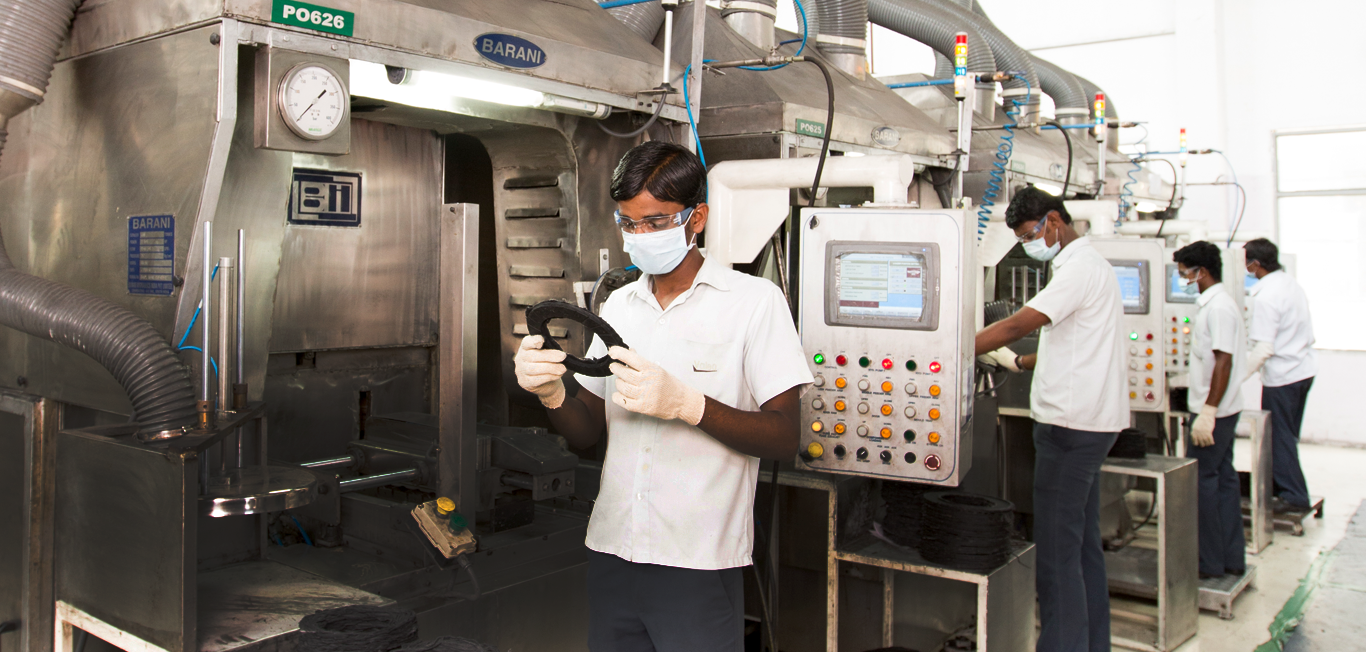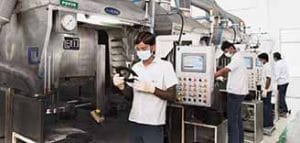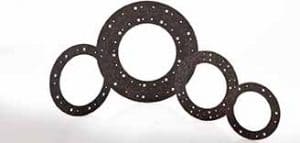Valeo Friction Materials India hit the bull’s eye with its export strategy. Ashish Bhatia looks at the all round efforts undertaken to reach new markets despite a raging pandemic.
The outbreak of the pandemic aggravated the situation and impacted global trade equations. Indian auto component manufacturers, however, in the first half of the fiscal 2020-21, for the first time, witnessed a trade surplus. In effect, the positive trade balance meant that
exports outweighed imports. Auto component exports, however, declined by 23.6 per cent to Rs.39,003 crore (USD 5.2 billion) in H12020-21 from Rs.51,028 crore (USD 7.4 billion) in H12019-20. Amidst the trend, Valeo Friction Materials India (VFMI) proved to be an exception as it hit the bull’s eye. In line with its export strategy, the company’s total export sales accounted for seven per cent of its total annual business in the year 2019.
Valeo’s counter-strategy to steer past the slump in the domestic market had the company, in 2020, enter new territories such as South America, the Balkans, SAARC nations and the ASEAN countries. Establishing its business in new territories, VFMI was able to achieve a significant milestone of 145 per cent growth in exports. It accounted for 19 per cent of the overall annual business. The company attributes the success to key initiatives like strategic pricing of the products, effective negotiation, submitting the samples to prospective customers, and rapid testing and validation. The company credits the growth to the proactive and effective planning of deliveries to circumvent the logistic and supply chain challenges, efforts to reach out and re-establishing connections with the existing network that enabled the company to leverage new business opportunities. The company especially focussed on identifying new customers in new geographies besides allocating resources for participation in the overseas automobile and components exhibitions to create an awareness around its products and next-generation technologies.
Focussed on reducing carbon emissions
VFMI’s success in exports, in a volatile environment, is centred around the group’s strong focus on reducing carbon emissions. The company manufactures an estimated 14 million facings per year. It caters to the two-wheeler and three-wheeler segment on one end of the spectrum and the off-highway segment on the other end of the spectrum. In the middle, it also caters to both the passenger vehicles and commercial vehicles segments as part of the entire automotive universe. Deemed as the first auto components manufacturer to partner customers, from concept to completion, the company is claimed to have channelised 12 per cent of its OE sales powered by a 500+ workforce back into Research and Development (R&D) activities.
In product-specific measures, to keep a low carbon footprint, the company relies on fibre glass-based technology. It is known to use a range of materials free from asbestos, lead, organic solvents, ceramic and aramid fibre. The Valeo G5 clutch facings are claimed to offer a longer lifespan and are known to comply with European regulations. The high-performance clutch facings are claimed to be resistant to high temperatures and are manufactured in strict compliance with the global standardisation of raw materials and manufacturing processes to ensure qualitative consistency. Known as the G5 clean technology, it is said to have made VFMI a leader in dry friction clutch facings. The company also manufacturers transmission clutch facings for its segments besides brake friction materials that the company manufactures for the off-highway segment.
S.A.T clutch set
The company launched the Self-Adjusting Technology (S.A.T) clutch set for Jeep Compass 2.0 Diesel in February 2021. It was an opportunity to tap the potential of the Jeep being exported to many right-hand drive markets like the United Kingdom, Australia, New Zealand, Brunei, Japan, Indonesia, Nepal, and Thailand and the company couldn’t let go of it. VFMI is known to have priced the clutch aggressively as compared to OEs in a bid to gain market share. With a claimed superior quality and durability, the company launched the product for the Independent Aftermarket (IAM). The vehicle population of 1,00,000 presented a considerable opportunity.
Prior to it, in 2020, the company also launched seven new tractor parts for models from Mahindra, Farmtrac, Escort tractors and
International tractor aimed at addressing the duty cycles that involve stop and go actions. It is claimed to have addressed the associated clutch wear. The clutch sets are aimed at addressing issues like a sticky clutch, soft clutch, hard clutch, high engine revs when the clutch is engaged, a slipping clutch, additional noise, the lack of pedal ‘give’, or the frequent needs for replacement. As an OE supplier to the agriculture segment, the company bundles the clutch sets with cover assembly, driven plates and release bearings. The innovation cycles have led to the company pool consisting of over 50 parts. The company also became the first IAM supplier for the Maruti Suzuki Super Carry as a testimony to its business interest in the light commercial vehicle segment. VFMI also became the second supplier after OEs to BharatBenz. It added three parts to the portfolio to tap the segment. These included clutch cover, clutch disc and the clutch set.
The aftermarket
The company strives hard to maintain the same quality grade in its aftermarket offerings. It is capable of doing so without any additional
lead time in tooling. The company is also focused on adding moulded clutch facings to the product mix. Moulded clutch facings are known to be suited to segments associated with higher rpm engines. They are claimed to possess higher physical strength like burst, shear, cross braking in comparison to other moulded materials. These are often recommended for tractor and trailer applications as an example. A look at the product mix reveals product grades like F400, F450, F510 UL, and F510 MCC UL to name a few. ACI
Self-Adjusting Technology
 A clutch acts as an interface between the engine and the gearbox. It is known to enable the interruption of torque transfer for a gear change. When the clutch is engaged, the full engine torque is said to be transmitted to the gearbox input shaft. The clutch disc, located between the pressure plate of the cover and the flywheel, in the engaged position, has the two facings squeezed between the two friction surfaces. The facing on one side of the clutch disc is in contact with the flywheel friction surface and the facing on the other side is in contact with the cover pressure plate. As per Valeo studies, despite different qualities and technologies, the facings are subject to wear over time. The loss of thickness of the facings leads to the pressure plate moving towards the flywheel, and the diaphragm in contact with the pressure plate changing. When the actuation force that needs to be applied to the cover via the clutch pedal increases, the pedal effort for the driver also becomes greater. The Valeo Self-Adjusting Technology (S.A.T) ensures that the same pedal effort can be maintained throughout the clutch life. It is achieved by increasing the effective thickness of the pressure plate. Valeo has been producing S.A.T. clutches for car manufacturers since the year 2000. High torque capacity, comfort, compact and robust design, increased durability, efficiency, ease of fit and enhanced clutch life are among the claimed advantages.
A clutch acts as an interface between the engine and the gearbox. It is known to enable the interruption of torque transfer for a gear change. When the clutch is engaged, the full engine torque is said to be transmitted to the gearbox input shaft. The clutch disc, located between the pressure plate of the cover and the flywheel, in the engaged position, has the two facings squeezed between the two friction surfaces. The facing on one side of the clutch disc is in contact with the flywheel friction surface and the facing on the other side is in contact with the cover pressure plate. As per Valeo studies, despite different qualities and technologies, the facings are subject to wear over time. The loss of thickness of the facings leads to the pressure plate moving towards the flywheel, and the diaphragm in contact with the pressure plate changing. When the actuation force that needs to be applied to the cover via the clutch pedal increases, the pedal effort for the driver also becomes greater. The Valeo Self-Adjusting Technology (S.A.T) ensures that the same pedal effort can be maintained throughout the clutch life. It is achieved by increasing the effective thickness of the pressure plate. Valeo has been producing S.A.T. clutches for car manufacturers since the year 2000. High torque capacity, comfort, compact and robust design, increased durability, efficiency, ease of fit and enhanced clutch life are among the claimed advantages.


















Leave a Reply